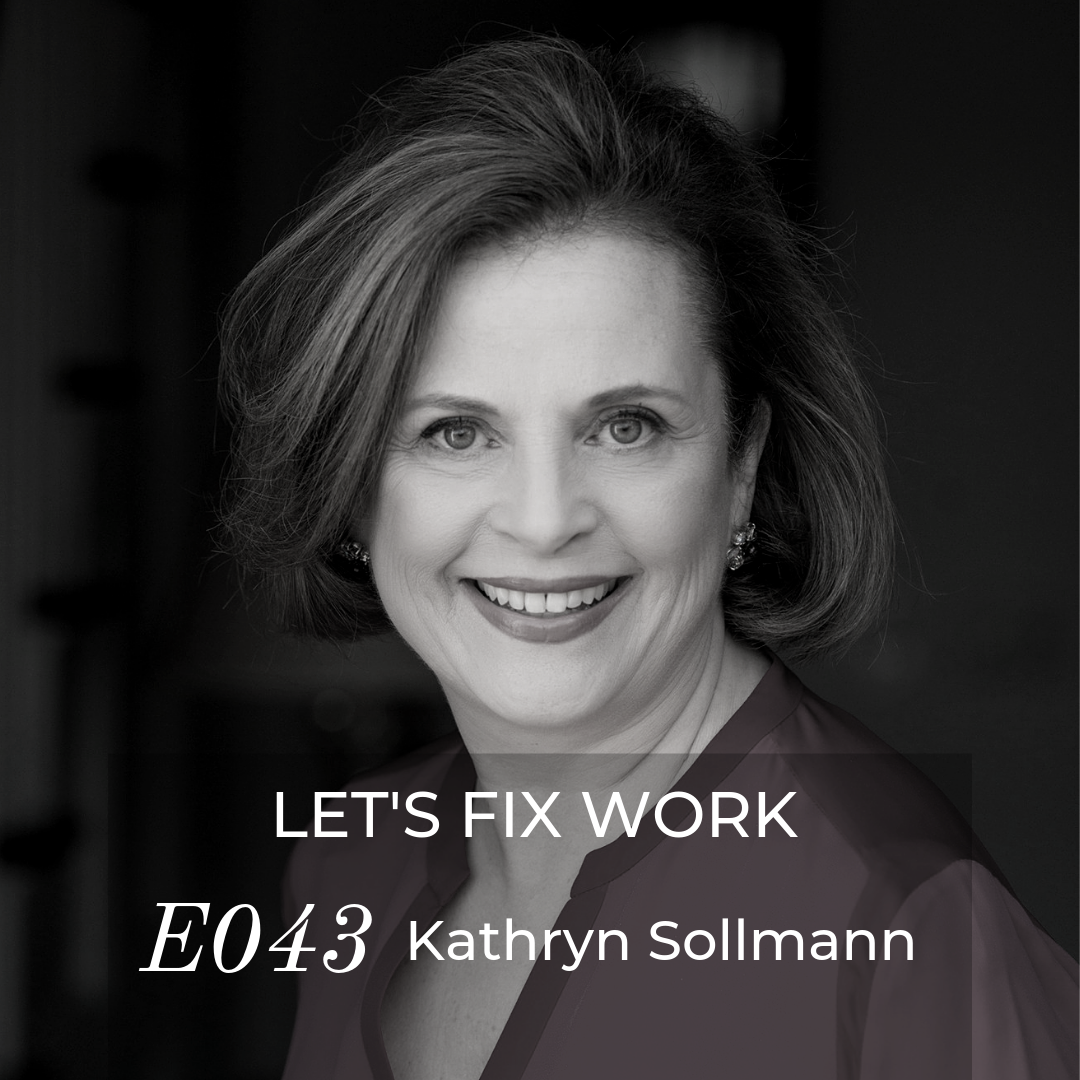
Did you know that a woman gives up an average of four times her salary every year she is out of the workforce? That’s a staggering statistic, isn’t it? Well, it is just one of the many insights Kathryn Sollman, speaker, career coach, and author, shared with me on a recent episode of Let’s Fix Work. Kathryn is on a mission to show women that there is flexibility to be found in the workforce. And that you can find a work-life balance that suits your lifestyle, one in which you don’t feel the necessity to step away from work completely while you raise a family, care for elderly parents, or live life, just a little.
Women who are newly stepping into the workforce are doing so in an era where the messaging regarding ambition is redefined. Kathryn explains, “Young women, as they are graduating from college, business school, or law school, are thinking about how they can have flexibility down the road and choosing carefully the jobs that are more likely to offer them that.”
Kathryn went on to say this, “When you talk about women and work, there seems to be a bias that you’re only ambitious if you’re aiming for the C-Suite. I took issue with that because I think that there are lots of smart and talented and ambitious women who are looking for a different kind of work paradigm and one that allows them to more capably blend work and life.”
But what happens if you are already in the workforce and now want a more flexible schedule? You can either find a job that offers a schedule that fits your lifestyle or broach the subject with your boss. Kathryn has some advice for women who do want to bring up the topic of work-life balance to a boss or superior.
First, rather than ask to telecommute 2-3 days a week in a casual tone, craft a proposal instead. “Create an actual proposal like you would pitch a client. You have to really cover all the bases, anticipate all of the challenges and the obstacles that your boss will put in front of you,” Kathryn says.
Kathryn also urges women to be clear. Describe what kind of flexibility you’re looking for and avoid stating murky phrases like, “I just want to work in a more flexible way.” That could mean a million things. You’ve got to really describe what you’re looking to do and outline how things are going to get done.
Finally, Kathryn says, “The last thing to include in your proposal is an offer for a trial period. Put that out there that you’re willing to give the new working schedule a trial for three months and then see how it goes.”
If we take a step back or rather a bird’s eye view of what Kathryn is saying, she is asking women to be a little introspective, to think about what they really want and what they really need and then devise a plan to take action and make it happen.
And of course, you may be thinking, “Well, what do I do if my proposal gets rejected?” You can, of course, decide whether you still need a full-time job (one that offers benefits and salary). If you do, there are many options. You can still have a full-time job, but one that’s more flexible (somewhere else). You could also work to become a full-time freelancer. In fact, Kathryn shared with me that, “There are studies that say within a year, most freelancers earn more than they did when they were working full time.” There are options. Think about what you want in your life, create a plan, take action, and let’s fix work.
To listen to my complete conversation with Kathryn about flexibility in work to fit your life, click here.
Wow, Laurie, it’s truly inspiring to see other Women entrepreneurs acknowledge that there needs to be more flexibility for Women in the workplace. Highly recommend Rise (joinrise.co) for more career inspo and women empowerment!